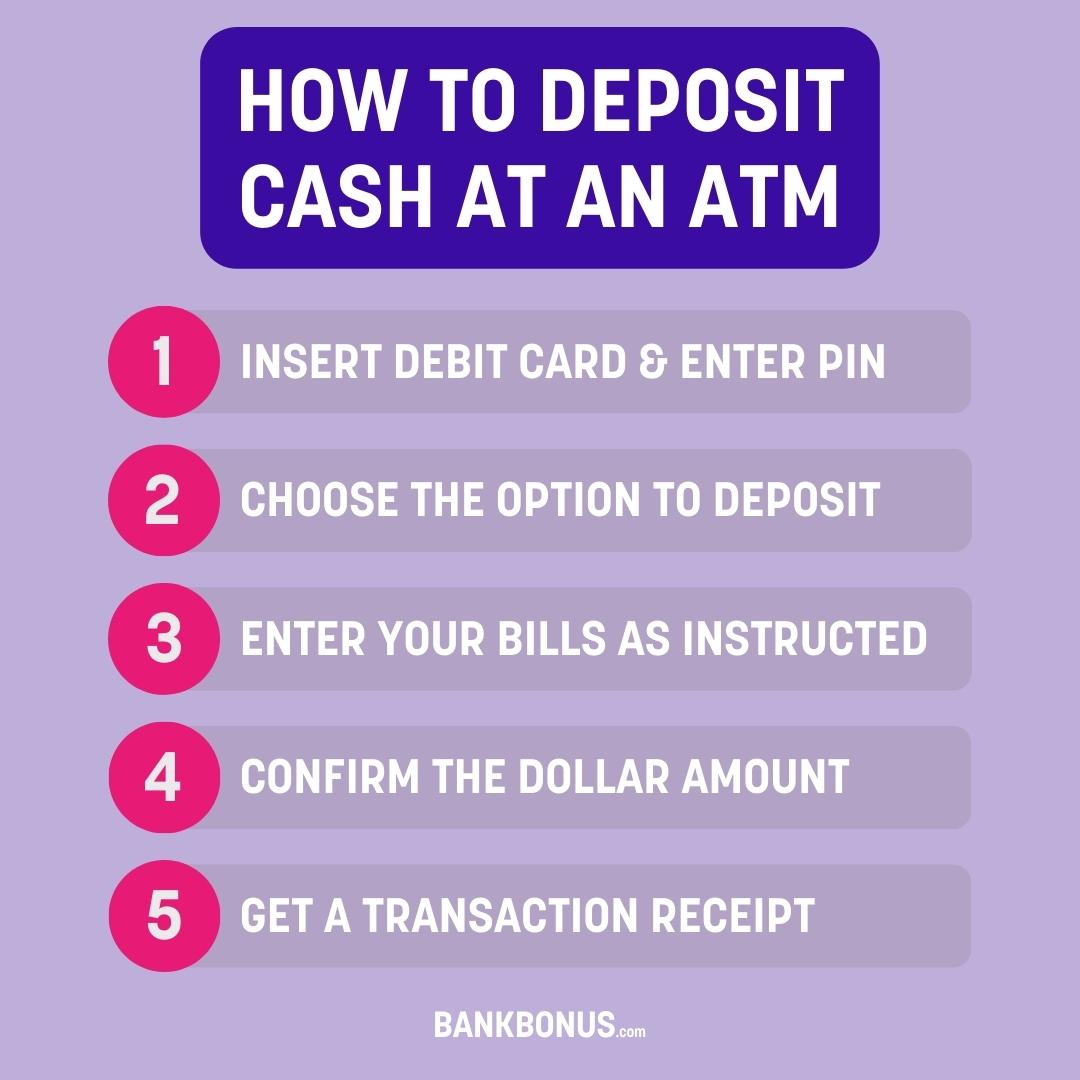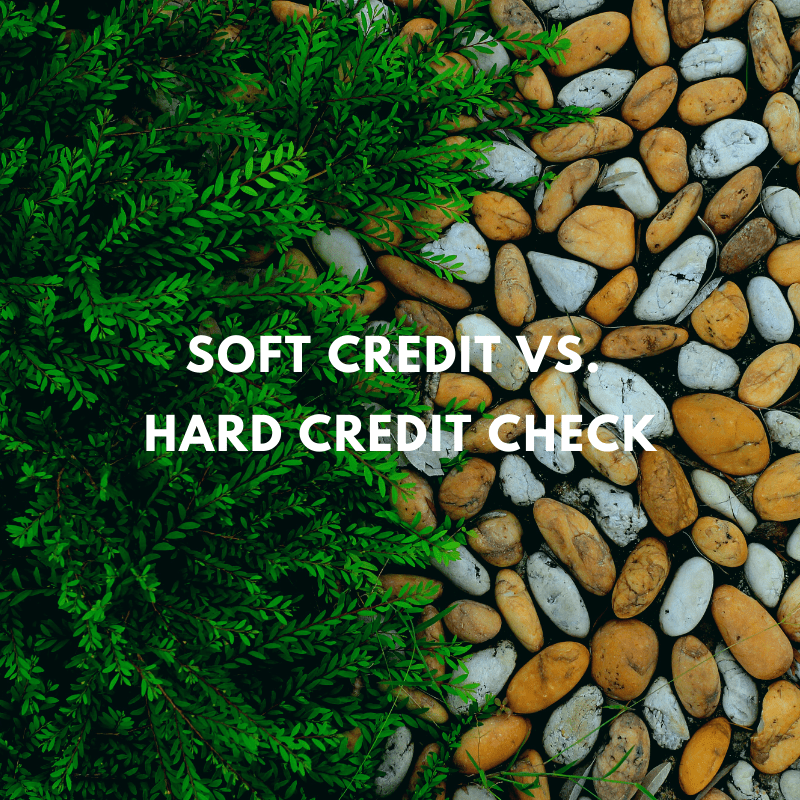Most banks and credit unions will allow for a checking or savings account deposit at an in-network ATM, located at their branches and other retail locations.
While there are workarounds to maneuver cash into your digital-only bank account, the convoluted process is a far cry from the simplicity of depositing cash bills directly into your bank’s ATM machine.
We’ll discuss how to deposit cash into ATMs, limits or rules to be aware of, and the most common related questions that consumers have.
Can You Deposit Cash at ATMs with Large Banks?
Cash ATM deposits are allowed at nine of the 10 largest banks in the United States:
- JP Morgan Chase
- Bank of America (BOA)
- Citi
- Wells Fargo
- U.S. Bank
- Truist Bank
- PNC
- Capital One
- TD Bank
At the nation’s eighth largest bank, Goldman Sachs, account holders cannot deposit cash into their Goldman Sachs-branded Marcus checking account.
How to Deposit Cash at an ATM
Here are the steps needed to deposit cash at an ATM:

- Insert your debit card and provide your PIN.
- Choose “Deposit” among the different menu options.
- Enter the cash bills as instructed. This means inserting the cash bills one at a time through an ATM deposit slot that can read and scan the bill or depositing cash bills through an ATM-provided envelope.
- Confirm the total dollar amount you’ll be depositing.
- Get a transaction receipt through a deposit slip printout, text, or email.
How Much Cash Can You Deposit at an ATM?
Typically, there is no limit to your ATM deposit amount. But there are commonly limits to how many bills, checks, or other items you can deposit within one transaction — or even the number of transactions you can complete within a specific timeframe.
Wells Fargo, as one example, limits customers to 30 items. Check with your bank or credit union to see what those limits are.
Are There Limits on Cash Deposits at Out-of-Network ATMs?
Possibly, but most banks and credit unions do not allow for out-of-network ATM deposits in the first place.
Wells Fargo, U.S. Bank, and Chase — three of the country’s largest banks — do not accept cash deposits at non-branded ATMs.
PNC Bank is one exception. It does allow for out-of-network cash deposits at AllPoint network and other ATMs, but there are fees for using an ATM outside of the PNC Bank network. Additionally, it takes longer to process the deposit.
Can You Deposit Cash at an ATM with Online Banks?
With some online bank accounts, you can deposit cash. But it’s not as simple as using an ATM card to make a cash deposit. It takes some planning and effort.
- Give the cash to a trusted friend or family member. Give it to them and ask them to write you a check that you can in turn deposit through your bank’s app.
- Convert cash into a cashier’s check. Online-only banks generally allow for mobile check deposits and some will let you deposit a cashier’s check. Purchasing a cashier’s check can cost around $15 to $20, but if you have a significant amount of cash it could be worthwhile.
- Do an ACH transfer. Deposit funds into a traditional bank that does allow for cash ATM deposits, like Bank of America, and then do an automated clearing house (ACH) transfer. The method is fast, secure, and fee-free – provided you select a traditional bank that offers fee-free ACHs.
- Make a deposit at a Capital One Cafe. Capital One 360 banking customers can deposit checks or cash at any cafe location.
- Pay a $3.50 fee if you’re a Current online bank customer. Current Bank supports cash deposits at more than 60,000 retailers nationwide, including Family Dollar, Walmart, Dollar General, and CVS Pharmacy. Show the store cashier your unique Current app barcode from your phone so they can credit the funds directly to your account.
Frequently Asked Questions
When You Deposit Cash at an ATM, Is it Available Immediately?
No, generally funds won’t be available until at least the next business day. However, if your bank ATM uses non-envelope cash deposits the funds could be available right away as a scanner can count and verify the cash bills being deposited.
With deposits at an out-of-network ATM, the process is slower. It takes the bank more time to receive and verify the funds. As a minimum, it could take four to five business days.
How Can I Deposit Money Without Going to the Bank?
There are many ways to deposit funds without having to go to the bank.
- Use a reloadable cash card. Many retail chains like Walgreens or Walmart sell cash reload cards that you can use to add funds to your account. These prepaid cards charge upfront and activation fees, but there may be subsequent reload fees as well.
- Do an ACH transfer. You can transfer funds to your online-only, or any other, bank account through ACH. On the bank website or in its mobile app, you can link external bank accounts. You’ll need to provide your full name, as it appears on bank accounts, routing number, and account number. Some banks will charge fees for ACH transfers and they may take 1-2 business days to complete.
- Purchase a prepaid debit card. Many of these prepaid debit cards enable you to transfer card funds to an account at an online-only or at a brick-and-mortar bank.
- Purchase a money order (MO). If your bank doesn’t accept mobile deposit money orders, you can send the MO by post mail to your bank. With the fees to purchase a money order and pay for postage, it may make sense to wait until you have a few hundred dollars or more.
How Much Money Can You Take Out at an ATM?
ATM withdrawal limits vary by bank. There are limits to how much you can withdraw per transaction or within a single day. Limits usually range from $300 to $5,000 per day.
A $1,000 per day limit is set by Wells Fargo, Bank of America, and Chase. Check with your bank to see what they allow. Beyond any bank limits, ATM networks may impose their own withdrawal limits too.
How Do Banks Verify Cash Deposits?
Most banks use a counting machine to count all the bills in the machine. The cash is counted on the spot, with security guards present, and then brought to the physical bank where it’s counted again. Bank employees will also verify the reported deposited amounts.
Do Banks Report Cash Deposits?
Yes, banks monitor and report cash deposits. Banks are required to report any cash deposit of $10,000 or more to the federal government. They are also required to monitor for and report suspicious patterns of deposit, like multiple deposits just below $10,000.
If depositing a large sum, a bank may ask how or where you acquired the cash. While this seems intrusive, it is legal. A bank can even reject a cash deposit.
Is it Safe to Deposit Cash at an ATM?
In most instances, it is safe to deposit cash at an ATM but it’s always wise to use caution when publicly handling cash.
Additionally, keep in mind there may be major consequences if you make any sort of error. Banks can close accounts due to too many deposits that look suspicious, which include:
- The incorrect amount is deposited; you indicate you’re depositing $500 in the envelope, but it contains only $50.
- You make multiple transactions for just under the maximum ATM cash deposit limit.
- You make multiple ATM cash deposits and in-store bank deposits within a short period of time.
- You make one or more cash deposits that total $10,000.
Accidental fraud, or activity that looks like fraud, can cause your account to be closed or suspended with all of your funds frozen.





Comments are closed.
Comments are closed here.